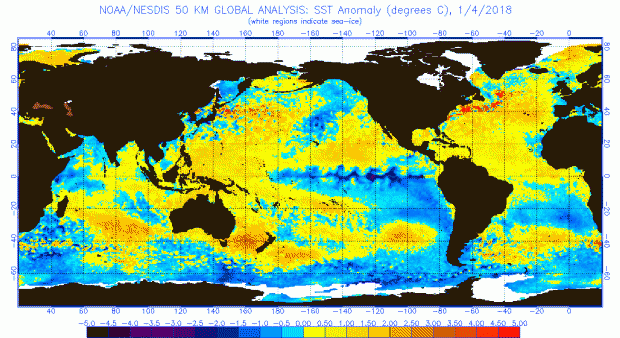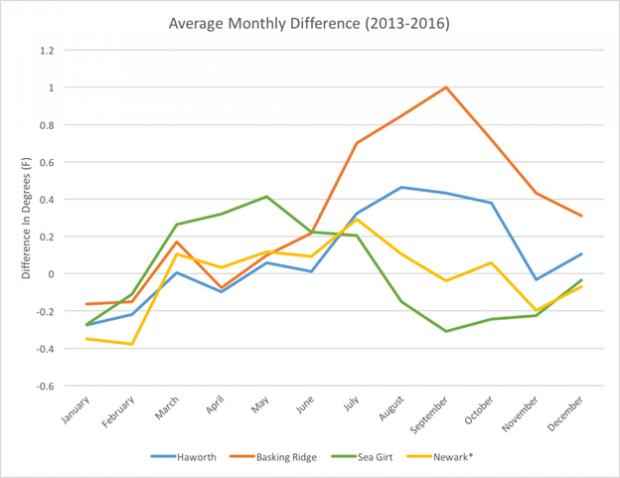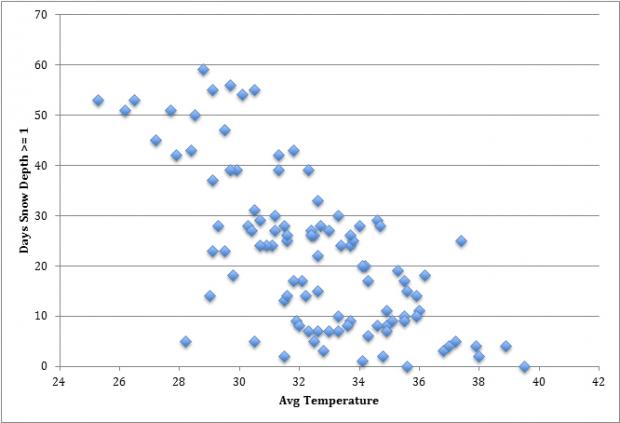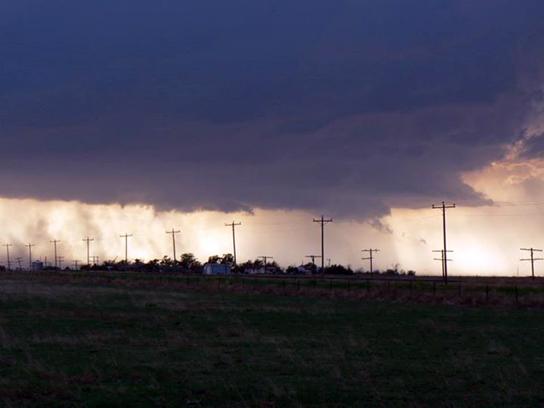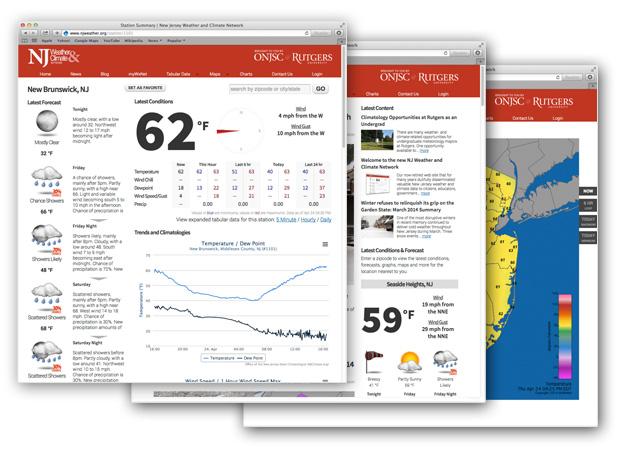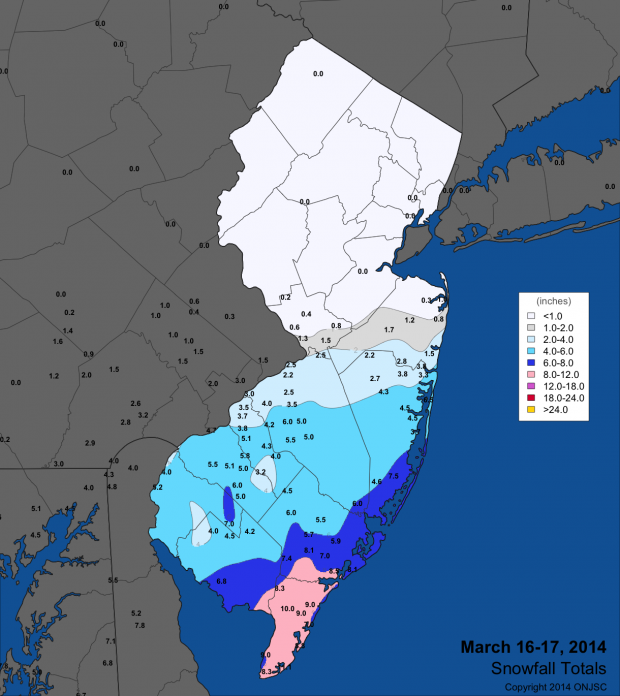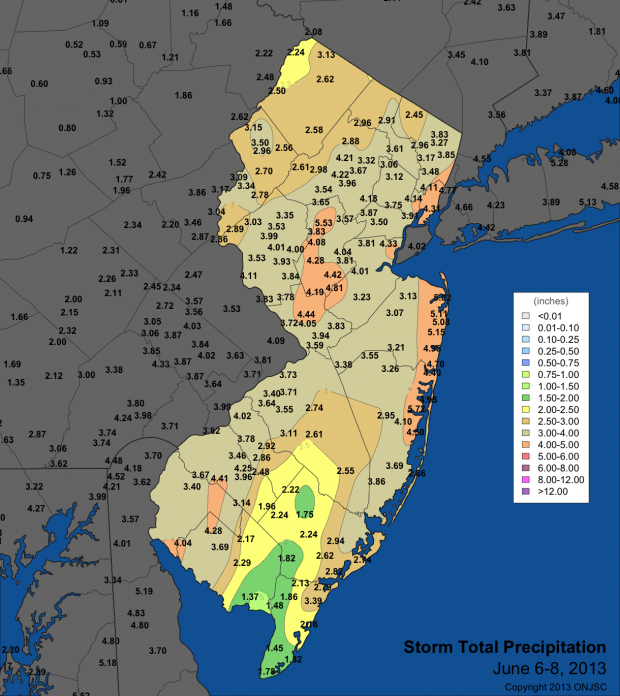Seasonal Trends in Extreme Minimum Temperatures at Six New Jersey Locations
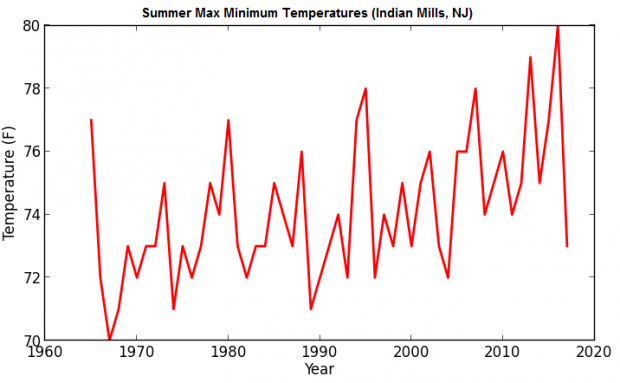
Data have been collected from multiple NJ stations over a long period of time, some dating back to the nineteenth century. With this amount of data, we can perform a multitude of analyses on different variables, such as daily maximum or minimum temperature.
In this brief report, we examine seasonal maximum minimum temperature (that is, the highest daily minimum temperature in a meteorological season) and the seasonal minimum minimum temperature (the lowest daily minimum temperature in a meteorological season). Each of these values has potentially important ecological and human health impacts. For instance, an increase in the lowest minimum may permit the eggs of insects, such as the Southern Pine Beetle, to survive winters in regions where colder temperatures in the past prohibited survival. This beetle has already invaded the New Jersey Pinelands, and threatens to do considerably more damage.


